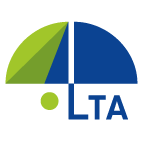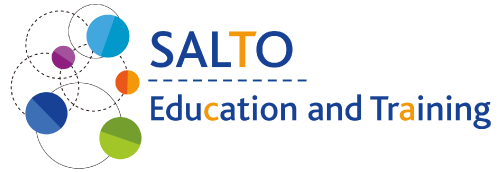Embrace inclusion and diversity in your Erasmus+ projects!

Main Info
TCA Description
One central event, a TCA seminar with panel discussions, experts’ presentations, trainings and workshops for KA1 and KA2 beneficiaries (SE, VET, AE, HE) is to be organized at 15 - 18 November 2022. It is planned for up to 60 participants and the places will be offered to all NAs. The event is planned as hybrid.
Expected objectives
and outputs – transversal:
·
Increase the capacities of LTA
participants to improve the inclusion and diversity dimension in their current
and future Erasmus+ projects
·
Establish a common understanding of those
who may be considered people with fewer opportunities and set up a coherent
framework for including them in the programme
·
Developing educational activities and
materials for beneficiaries in order to convey ways of involving participants
with fewer opportunities in programme activities
·
Promoting good
practice examples and maintaining the good practice collection related to
projects fostering inclusion and diversity through direct involvement of
participants with fewer opportunities and/or focusing on inclusion and diversity
topic
·
Providing a communication channel
(platform) for exchange of ideas and networking opportunities
·
Providing NAs` and
experts` additional support in identifying various areas for improvement and
enable valuable sharing of ideas among participants
Maximum number of places for on site participants is 60. 20 additional participants are planned to participate online. The seminar programme starts on 15 November in the afternoon and ends on 17 November in the late afternoon. Therefore, HR01 covers accomodation for participants until 18 November. The seminar will be open for all countries. Travel costs are not covered by the organising NA, they will be covered by sending NAs.
Partners and participants
Pending booked places
Accepted places
TCA Participant Application
Long-term Activity Info
The main aim of the LTA is to increase the capacities of Erasmus+ beneficiaries in the topic of inclusion and diversity. It would be organised for KA1 and KA2 beneficiaries in the fields of SE, VET, HE and AE, focusing on Erasmus+ beneficiaries, i.e., organisations with at least some experience in E+. The main expected outputs are for participants to gain theoretical and practical knowledge on how to raise the awareness of the I&D priority, increase the inclusive aspect of their project activities and results as well as identify and include more participants with fewer opportunities in their projects.
In some Erasmus+ projects in VET, increasing accessibility of the existing project results would result in inclusion & diversity project impact.
In AE KA1, a new format is introduced with learners with fewer opportunities as eligible participants, therefore the LTA is expected to provide additional needed support to organisations to increase their participation.
In SE, pupil mobility was introduced in the new programme as eligible activity in mobility projects along with broader definition of fewer opportunities. Therefore, LTA is expected to provide support to beneficiaries in integrating these changes while planning their project activities, both in KA1 and KA2, subsequently increasing participation of participants with fewer opportunities.
In HE, an unofficial survey for National Agencies from November 2021 on National criteria for the top up amount for participants with fewer opportunities has shown that quite different criteria have been used across the programme countries, both in quantitative and qualitative manner. There is also a large difference between countries when it comes to the estimation of the percentage of mobile students entitled to the top up under call 2021. One of the possible reasons could be the fact that there are some countries that comprise a large share of the mobile student population by using a broad list of defined criteria and others have only one or two criteria listed. These are only a few reasons why it would be very important to explore how these different approaches influence the increase or decrease of inclusion, what is the best way to define the fewer opportunities national criteria, how it could be done for the best in terms of not overburdening HEIs in the process of the implementation of those criteria etc. By involving more people with fewer opportunities in all programme activities, there is a need for exchanges between LTA participants to further expand categories and make the programme as accessible as possible. In this context, it will be particularly useful to exchange practices on how to increase the number of participants with fewer opportunities in the international dimension of the programme, especially bearing in mind possible administrative barriers, such as supporting documents for different criteria.
The LTA consist of: a transnational TCA, networking events, study visits and various trainings. Participating NAs will rotate the central events in the next years. Also, the partner NAs are deciding which events are to be organised on yearly basis and how many times. Since the LTA is offered to Erasmus+ beneficiaries across Europe and from different sectors within the E&T field, it is important to organise various activities across participating NAs in order to provide as many opportunities for participation as possible to Erasmus+ beneficiaries.
IMPLEMENTED ACTIVITIES:
International LTA event Embrace Inclusion & Diversity in Your Erasmus+ Projects (Croatia, November 2022.)
International LTA event Embrace Inclusion & Diversity in Your Erasmus+ Projects (Croatia, November 2023.)
International LTA seminar Embrace Inclusion & Diversity in Erasmus+ Projects (Malta, November 2024)
National LTA seminar The First Step into the World of Erasmus+ Projects of Inclusion and Diversity (Croatia, October 2023)
National LTA seminar The First Step into the World of Erasmus+ Projects of Inclusion and Diversity (Croatia, March 2024)
National LTA seminar The First Step into the World Erasmus+ Projects of Inclusion and Diversity (Croatia, March 2025)
PLANNED ACTIVITIES:
International LTA event Embrace Inclusion & Diversity in Your Erasmus+ Projects (Belgium, November 2025)
Expected objectives and outputs – transversal:
· Increase the capacities of LTA participants to improve the inclusion and diversity dimension in their current and future Erasmus+ projects
· Establish a common understanding of those who may be considered people with fewer opportunities and set up a coherent framework for including them in the programme
· Developing educational activities and materials for beneficiaries in order to convey ways of involving participants with fewer opportunities in programme activities
· Promoting good practice examples and maintaining the good practice collection related to projects fostering inclusion and diversity through direct involvement of participants with fewer opportunities and/or focusing on inclusion and diversity topic
· Providing a communication channel (platform) for exchange of ideas and networking opportunities
· Providing NAs` and experts` additional support in identifying various areas for improvement and enable valuable sharing of ideas among participants
Expected objectives and outputs – sector - specific:
In addition to the above-mentioned objectives, in all E&T fields the participants are expected to raise awareness about inclusion and diversity programme priority, as well as promote and increase participation of persons with fewer opportunities within their organisations, consequently improving the inclusion and diversity dimension in their projects.


